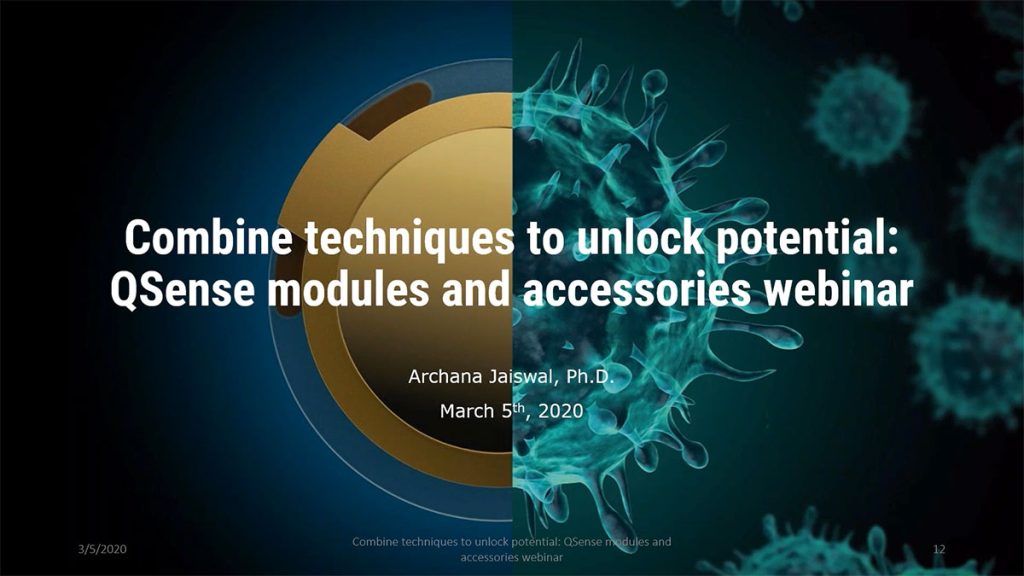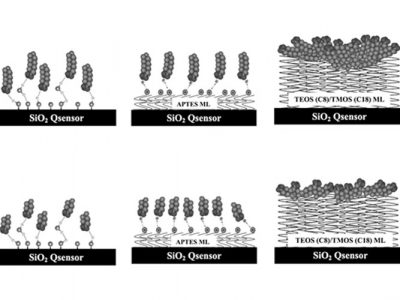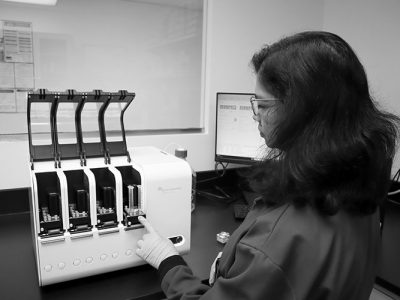Complementary techniques are often necessary when investigating complex surface phenomena. Combining these techniques in the same setup for simultaneous in-situ measurements offers a very promising approach.
Join Dr. Archana Jaiswal for our free webinar to learn how QCM-D can be combined with other surface analysis techniques, such as ellipsometry, electrochemistry and microscopy for improved and more thorough characterization of surface interactions and/or reactions.
The QCM-D offers a lot more than just the mass
The data collected with this technique allow for the quantification of both mass and thickness as well as viscoelastic properties of the layer at the surface in real-time. Not only can you characterize the final formed layer, but you can also follow the dynamic evolution of the surface interactions and get an understanding of how these happen and why. The measured parameters can also provide information on the level of hydration, and changes of film swelling or film collapse.
The possibility to follow dynamic processes such as film formation, film degradation, and structural rearrangements enables the exploration as well as characterization and optimization of nanoscale systems including for example biomolecules, polymers, surfactants and nanoparticles.
- Learn the practical experimental details that are often left out in literature
- Gain an in-depth understanding for how QCM-D measurements are performed and analyzed
- Learn about the different modules and applications for the QSense instruments





